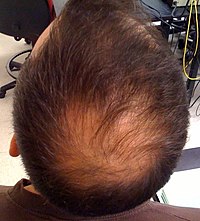
Photo from wikipedia
Abstract The passivated emitter and rear cell (PERC), with advantages of reducing rear surface recombination and improving rear surface reflectivity, is extensively applied in monocrystalline and multicrystalline silicon solar cells.… Click to show full abstract
Abstract The passivated emitter and rear cell (PERC), with advantages of reducing rear surface recombination and improving rear surface reflectivity, is extensively applied in monocrystalline and multicrystalline silicon solar cells. In this study, we investigated the rear PERC structure with various contact patterns (type I to VI) and line spacings (800–1000 µm) using 156.75 mm × 156.75 mm p-type Czochralski mono crystalline silicon wafers. The void formation on the rear-side contacts of PERC structures played an important role in affecting conversion efficiencies. A smaller laser ablated opening width may easily lead to the formation of voids under screen printing and co-firing backside aluminum. Further evidence from the electroluminescence (EL) measurements confirmed that the higher laser ablation power would result in a slightly dark region for the solar cell with a rear-side contact opening width greater than 45 µm. The type III backside contact pattern (dash 2:1) with a line spacing of 900 µm surpassed all other contact patterns owing to its excellent aluminum back surface field. As a result, by optimizing both the backside contact pattern and line spacing of PERC solar cells, the best conversion efficiency of 22.25% and 20.9% for the average PERC solar cells were achieved.
Journal Title: Solar Energy
Year Published: 2020
Link to full text (if available)
Share on Social Media: Sign Up to like & get
recommendations!